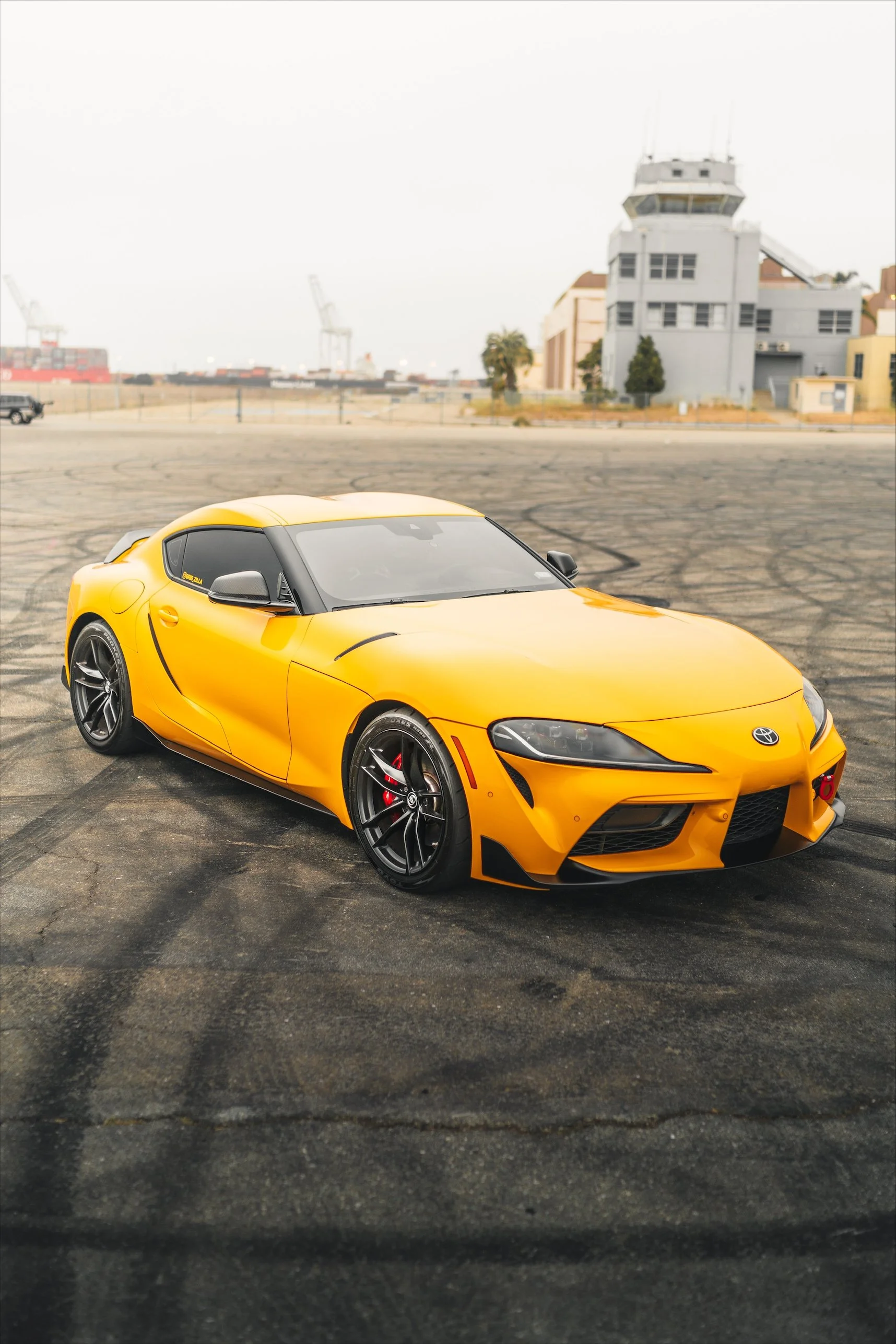Michael Baxi's Supra: No Limitations
It all began with a newly purchased FK8 and a casual trip to Thunderhill East with a few friends. Michael Baxi had been a speed freak and a bit of a tuner before he tried the track, but this outing had sparked something powerful inside him.
With the bug biting down hard, Michael decided to fit all the track-oriented modifications the car could accept without any custom modification. Ignoring his growing credit card debt, he built his inconspicuous Type R into a machine that could easily and reliably lap Sonoma in 1:49-range.
All throughout the modification process, Michael documented each step on his YouTube page.
Using only off-the-shelf parts, this build process was intended to be easily replicable so his fans could follow him if they chose to start tracking their own Type R. This philosophy also meant that the Civic had to retain all factory functionality and shed no factory interior or body panels for the sake of speed.
Short of cutting the car up and chucking the A/C unit in the garbage, there wasn’t much more he could do to go faster, so he put the Civic up for sale and replaced it with another platform—one which he felt he could grow with. After Will Kwok and Anthony Calayag had mentioned just how impressed they were with their new Supras, he had to try one for himself.
In stock trim, the Toyota was, well, a little underwhelming—especially compared to how capable the Civic was without any modification. The new Supra reminded him a little of his old MKIV in the way that it dealt with bumps and uneven roads. Like its predecessor, the A90 Supra is softly sprung and a little wallowy from the factory. It didn’t give him the confidence he needed when taking it to Sonoma for a shakedown—particularly in Turns 6 and 10.
Nevertheless, he managed to lap Sonoma in a respectable 1:52 and Laguna in an impressive 1:43, though much of that time had to be credited to the potent B58 engine.
Thankfully, he already knew what to change to alleviate this unnerving behavior. With the assistance of a few knowledgeable friends who shared the same vision for this car, he whipped out his credit card and started ordering. Christmas was coming early this year.
A week later, he’d turned the compromised GT into a focused track car with the following modifications:
MCS coilovers
SPL control arms and bushings
Vorschlag camber plates
Titan 7 PS5 wheels 18x10.75”
Advan A052 tires.
Though his fans had asked him to make a few engine modifications, Michael had decided to take another, less common tuning route—at least unusual for most Supra owners. With only an AMS downpipe offering a few more horsepower (but notably lower engine temperatures), he had somewhere around 340 horsepower at the rear wheels. The only other changes made under the hood were a CSF radiator and heat exchanger.
Once the mechanical grip was improved, he knew that aero was the missing ingredient.
Like Will Kwok, he felt that the motor was strong enough in stock trim. They both felt that the weak points in the package were its soft suspension and its less than stellar aerodynamics.
The A90 Supra has that same sleek, elegant shape that its predecessor had, but to profit from its prodigious power output, the car has to be stiffened and stuck to the asphalt in the high-speed sections. To do this, Michael added a Varis Engineering rear wing, splitter, canards, sideskirts, and rear diffuser. The diffuser wasn’t meant to stay on the car, though; it kept detaching during the first outing at Thunderhill, so Michael took that as a sign and left it in his garage.
When Michael returned to Sonoma, he was feeling ambivalent. Though Will’s car had given him reason to believe that the mildly tuned Supra would work wonders, he hadn’t actually tampered with the suspension much. Aside from a basic track alignment, there wasn’t much tweaked; he was still using MCS’ factory settings. quicker than the CTR?
In the first session, he dropped his lap time by three seconds.
The new setup provided much more low-speed traction, a benign amount of high-speed understeer, and braking, now improved with Ferodo DS3.12 pads and Endless 650F fluid, that wouldn’t fade over an entire session. The amount of confidence the new, stabler rear gave him helped him find the time. In fact, the data showed that most of the gains he experienced were in the faster bends.
That was what encouraged Michael to continue down this odd path. A Supra without any power adders? Well, with the age of the chassis and the relatively small pool of people sorting it out, he assumes the role of tuning pioneer—and that must be exhilarating.
Though there’s not many power-related items on the menu, he’s got a list of modifications to help modify the airflow around and through the car: Spage aero, an EPR carbon hood, EVS-style fenders; as well as a set of AP Racing brakes to shed a little weight. There’s also talk of a prototype cage and a CARB-legal turbo kit once the suspension is completely sorted, but we’ll leave those two vague to keep all our readers eagerly anticipating version 2.0 of this amazing GT.
Building this monster also presents an opportunity for father-son bonding.
Current Modifications
VERUS Engineering (Full aero kit, BMC brace, Liquids caps, brake ducts)
BBS LM 20” wheels (street)
Titan 7 TS5 18” wheels (track)
MCS 2-way coilovers
SPL Parts control arms, bushings, endlinks
Vorshlag camber plates
AMS PERFORMANCE downpipe
Blitz strut bar
CSF Radiators heat exchanger, auxiliary radiators
Upcoming Modifications
EVS fenders
ESR VRS carbon fiber hood
Spage front splitter, lip, GT swan neck rear wing, GT endplates
DAS prototype chromoly roll cage
DAS prototype engine mounts
AP 9660 brakes (front)






